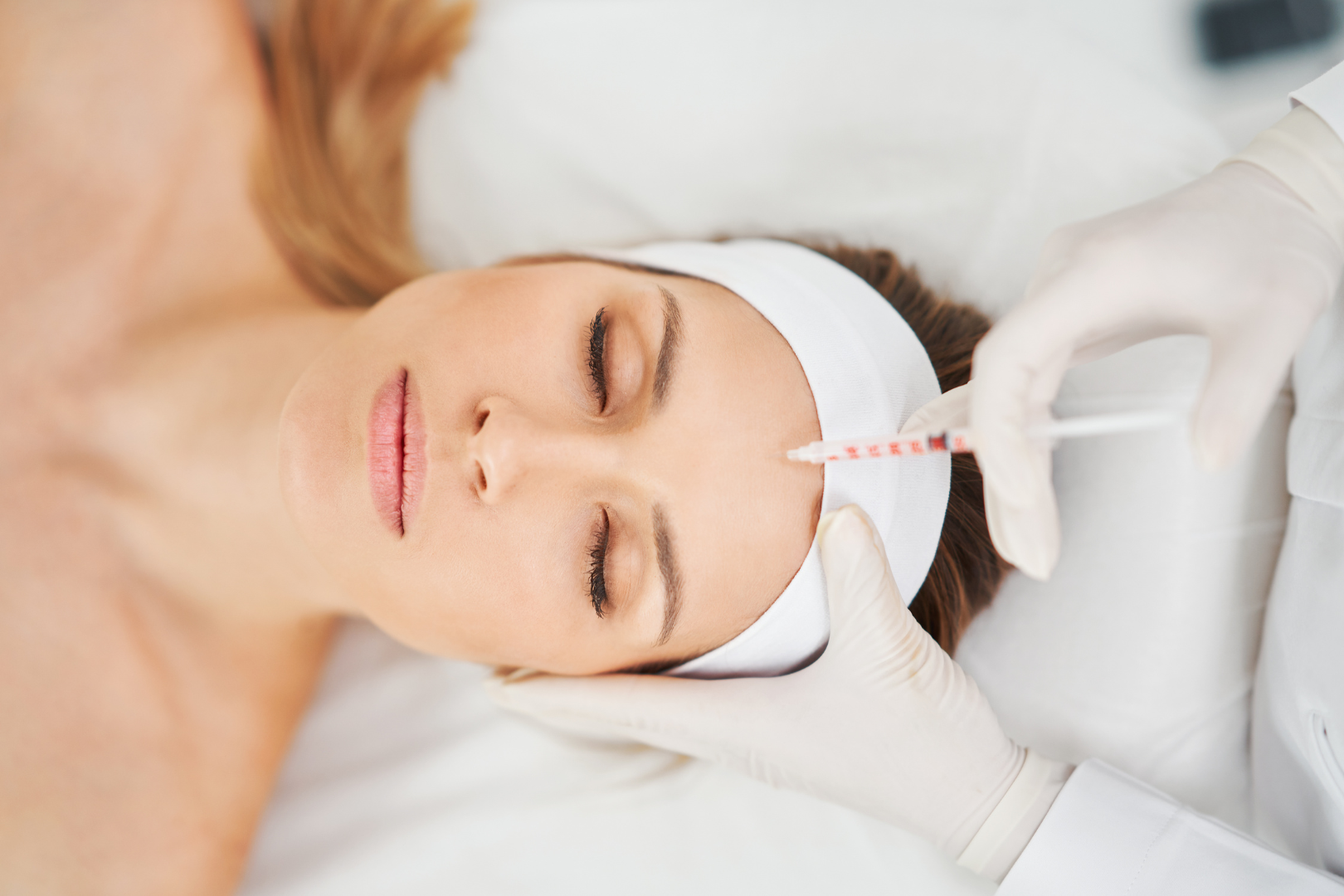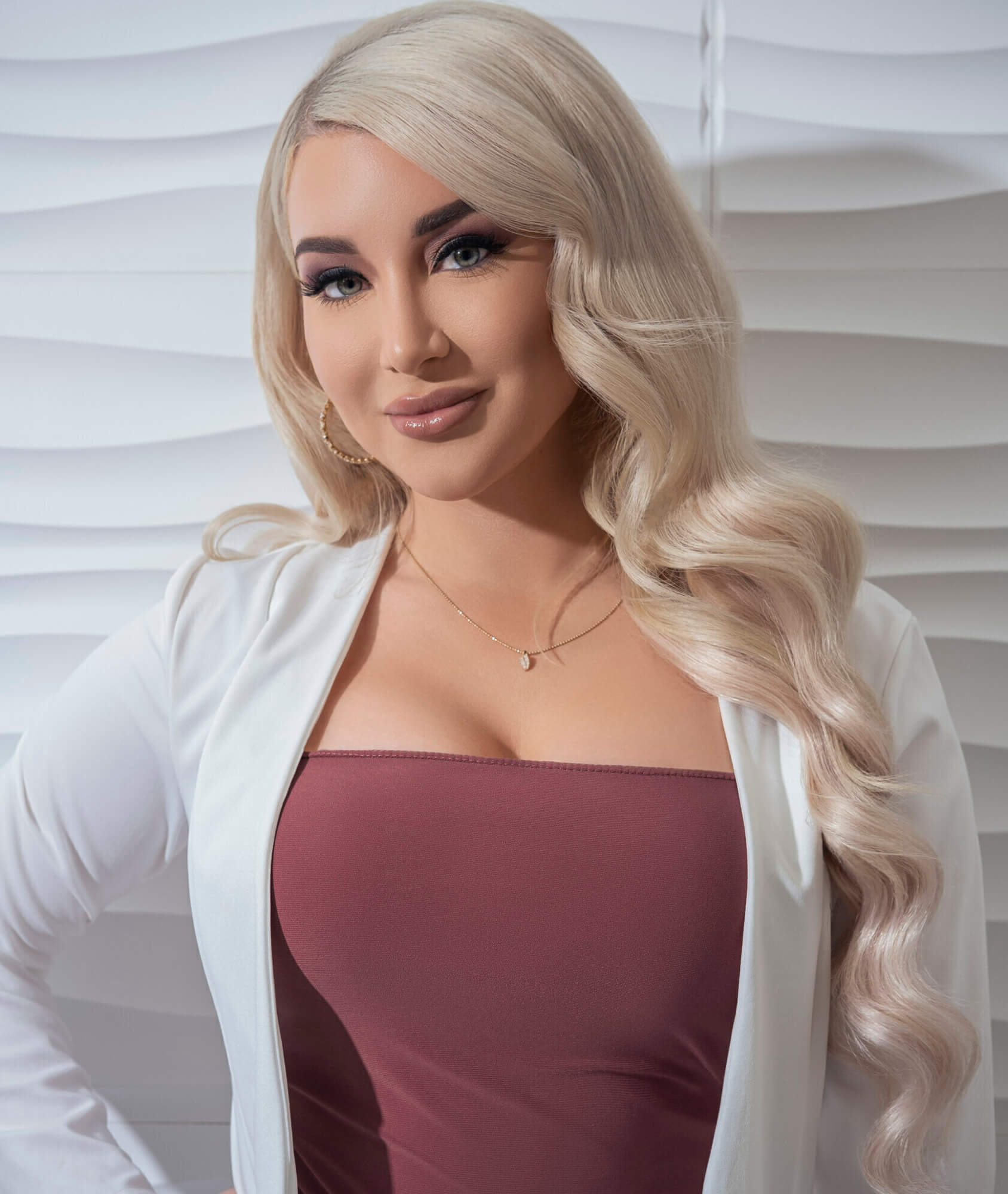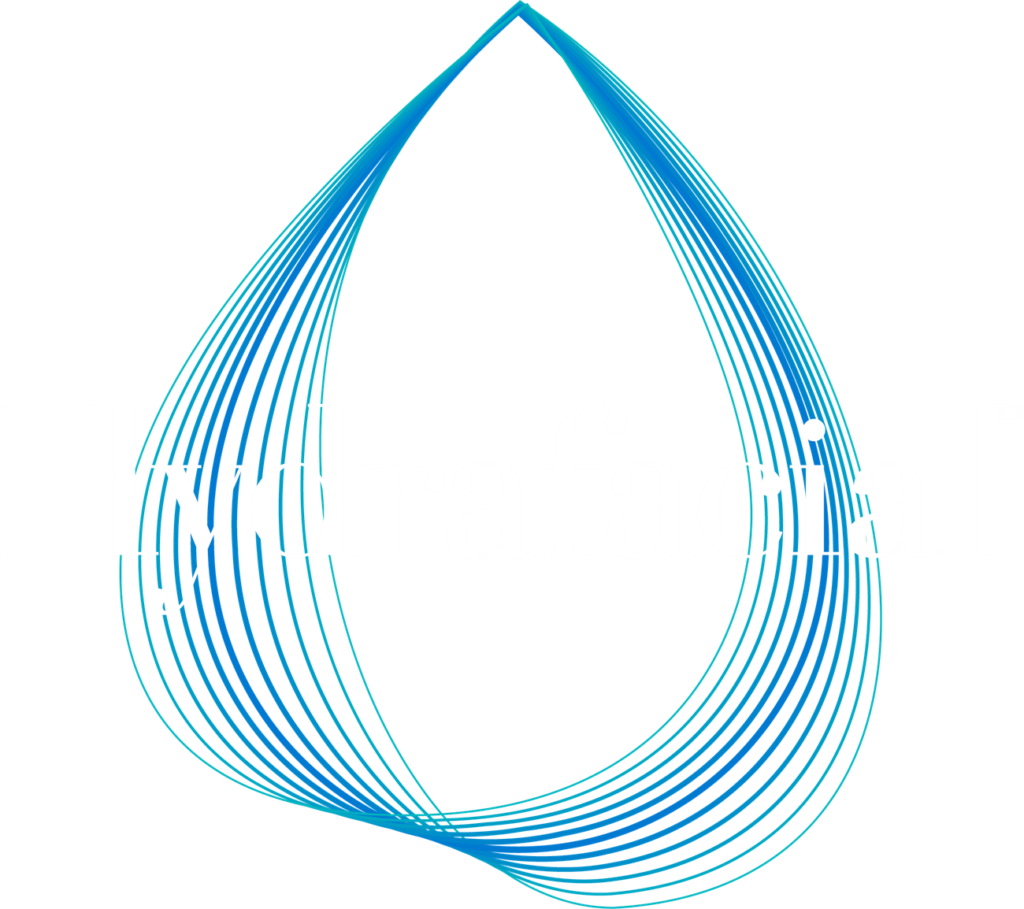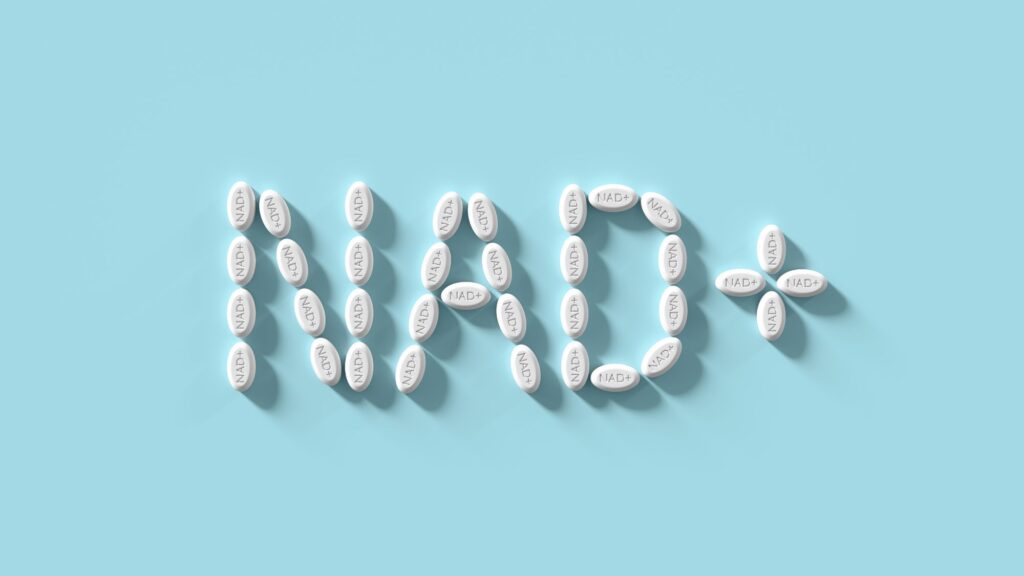Botox Risks & Side Effects Explained
Botox, technically known as Botulinum Toxin (BoTN) Type A, is a popular cosmetic treatment used to reduce the appearance of fine lines and wrinkles by temporarily relaxing muscles. While Botox is widely sought after for its anti-aging benefits, it’s important to understand the associated risks and potential side effects. In this article, we will explore Botox risks, the likelihood of experiencing them, and how to minimize complications, helping you make informed decisions about this treatment.
What are the risks of Botox and Dysport?
Minimizing risks and side effects of Botox hinges on the expertise of your provider, who not only selects the appropriate dosage, but also should demonstrate superior injection technique and precision (Kroumpouzos et al., 2021). This ensures optimal results, a longer duration of effect, and better value for your investment. It’s also important to note that while a provider may possess extensive theoretical knowledge, their practical experience could be limited. This is particularly true if they only perform BoTN treatments sporadically. The best provider will have a profound understanding of anatomy and theory, extensive real-world experience, and ongoing practice in administering treatment. Following pre-care and post-care instructions also helps lower the chances of side effects and complications.
The most common Botox risks are the effects of the injection itself, including pain, swelling, redness, and bruising (Lee et al., 2020; Witmanowski & Błochowiak, 2019). Pain should be relieved within an hour, and the other effects should be relieved within a few days. All of these Botox risks can be lessened with pre-care and comfort measures. Our office utilizes ice, numbing creams, lidocaine, and nitrous to manage pain, though pain is typically minimal.
Headaches
Headache is one of the potential Botox risks but is usually short-term. This can occur because the muscle first spasms before relaxing, but it can also be attributed to the trauma of the needle or anxiety from the procedure. In the case of Botox risks and side effects, about 9% of those being treated for forehead lines experienced headaches, but this figure is far higher than we’ve experienced in practice. Most headaches pass within a few days, though some reports of long-lasting headaches (2 to 4 weeks) exist (AbbVie, 2023; Witmanowski & Błochowiak, 2019).
Allergic Reactions
An allergic reaction is a rare but potential adverse event that can result in anything from local redness and swelling to overall itching and anaphylactic shock (rash, nausea, vomiting, difficulty breathing). Mild reactions should subside on their own or can be treated with antihistamines, while anaphylaxis is a medical emergency that requires epinephrine treatment (Witmanowski & Błochowiak, 2019). Those with a history of multiple or severe allergies may not be ideal candidates for BoTN treatment and should let their provider know. As Dysport contains lactose, those with an allergy to cow’s milk protein may be better suited using an alternative product such as Botox or Xeomin (Galderma, 2023).
Dry Skin
There have been reports of dry skin after treatment. This is thought to occur due to decreased activity of sweat glands (similar to how treatment helps excessive sweating).
Infection
Infection is a rare but potential complication that can occur with any procedure that pierces the skin (Witmanowski & Błochowiak, 2019). This would require further treatment to remedy.
Facial Asymmetry and Movement Limitations
Other complications generally consist of facial asymmetries and movement limitations. These can occur from too high of a dosage, a spread of effect, or an imbalance of muscle function. These can be corrected with additional treatment to rebalance muscle function in some cases. In other cases, these effects will slowly improve as the effect of the Botox wears off. These complications include eyelid and brow ptosis (drooping), vision changes, lip ptosis/asymmetric smile, and difficulty pursing the lips (Kroumpouzos et al., 2021; Lee et al., 2020; Ong & Sherris, 2019; Witmanowski & Błochowiak, 2019).
Eyelid and Eyebrow Drooping
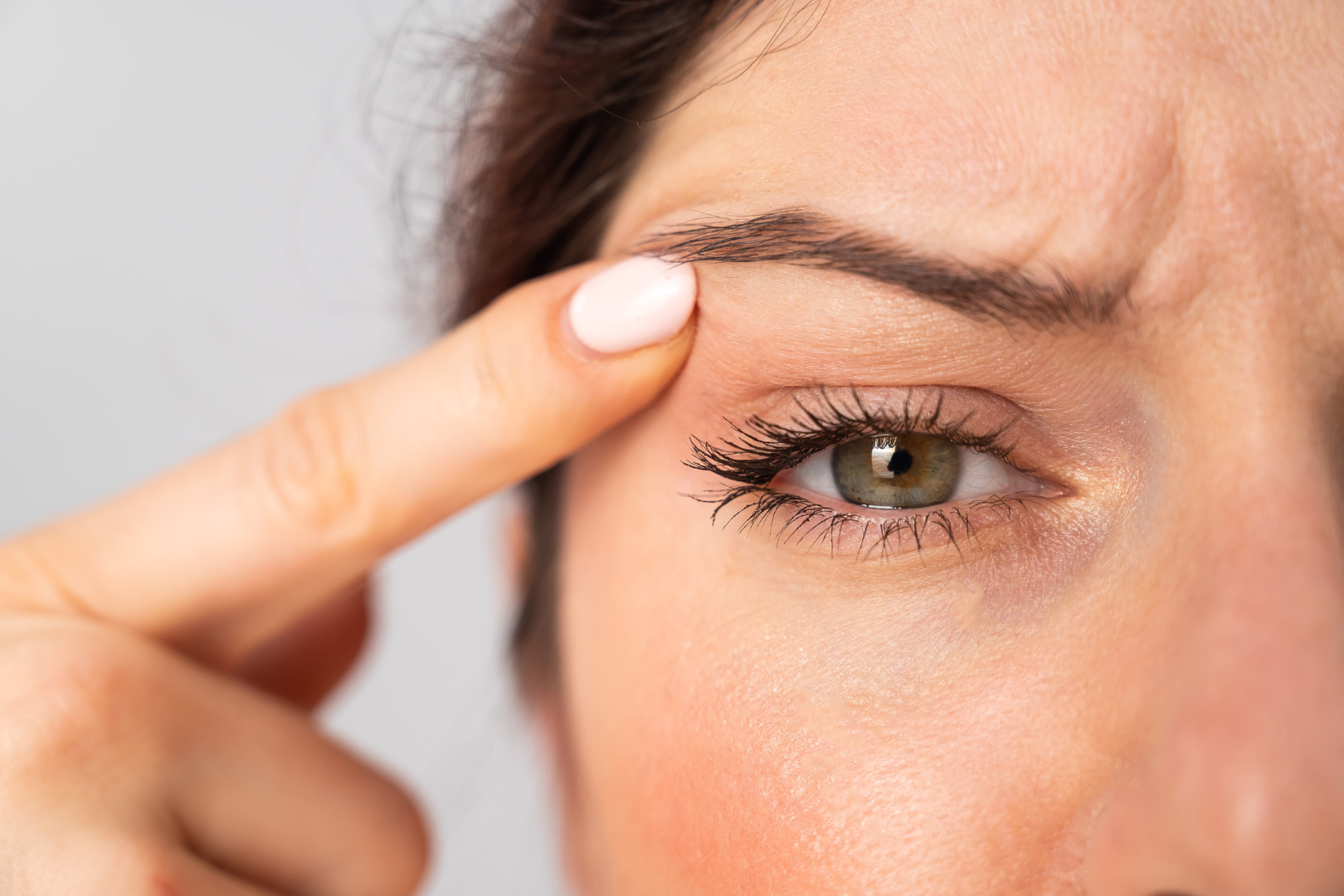
Eyelid/and or eyebrow ptosis (drooping) is one of the more common Botox risks and can occur after treatment between the brows, in the forehead, or around the eyes. This can first become visible as early as 2 days after treatment or as late as 10 days after treatment and is more common in those who already experience ptosis or have general weakness in these muscles, such as the elderly.
Some older patients already have ptosis that is not as visible, as their body has compensated by using more of the forehead muscles to help lift the eyelids. Treating the forehead then removes this assistance, causing the eyelid to droop. Loose skin could also contribute to making this more common in older patients. This drooping will recover on its own as the product wears off. Hence, it is typically much improved after 2 to 4 weeks. In some cases, prescription eye drops can be used for improvement. (Kroumpouzos et al., 2021; Witmanowski & Błochowiak, 2019).
Eyebrow ptosis/drooping can occur after forehead treatment in about 1% to 5% of patients, with an overall drop of about 2.5 mm and difficulty raising the brows (Kroumpouzos et al., 2021). However, this is mitigated by choosing an experienced provider. Another brow complication can be the raising out of the outer ends of the eyebrows, which is called a “Mephisto sign” or “Spock brow.” This occurs due to an imbalance of paralyzation, and the likelihood of this occurring can vary depending on individual anatomy and provider experience. If it does occur, it can last until the treatment wears off but can often be treated with additional units to even the brow muscles.
Other Potential Botox Risks Affecting the Eyes
Other potential Botox risks related to the eyes include diplopia (double vision), ectropion (the eyelid turning outward), blurred vision, dry eyes, watering eyes, and transient strabismus (crossing of the eye that comes and goes). All are quite rare and expected to return to normal as the effects of treatment wears off. Some may require further treatment to keep the eyes safe and moisturized until then.
Lip Drooping
Treatment around the mouth can potentially cause lip ptosis (drooping), an uneven smile, or difficulty pursing the lips. In some cases, treatment of the masseter can cause the opposite of the intended effect. In these cases, they become larger to compensate. Treatment of the neck can cause more serious side effects, such as difficulty speaking, swallowing, breathing, and/or hoarseness of the voice. These are also very rare, and the risk can be lowered by limiting the units used (Kroumpouzos et al., 2021; Witmanowski & Błochowiak, 2019).
Does Botox Cause Muscle Atrophy?
To start, knowing how the body recovers from Botox treatment is important. Botox only inhibits the release of acetylcholine for approximately 3 days. Following this, the body initiates a process where temporary nerve sprouts are generated to the affected muscles. This is to help re-establish connections and restore function. Once the original pathways are fully repaired, the temporary nerve sprouts regress (Nawrocki & Cha, 2020). Muscles do atrophy (shrink) when not in use, which is why Botox can work for facial slimming, so the real question is how well and how fully muscles return to normal between treatments or after treatments stop.
A variety of factors influence the ability of the body to generate nerve sprouts and repair. First, treatment with Botox causes the muscles to produce more of a protein called Insulin-like Growth Factor 1 (IGF-1), which helps to sprout nerves and repair the connections. The amount of IGF-1 in the body is influenced by how much estrogen you have. Younger women have more estrogen and should, therefore, be able to recover more quickly than older women. This is especially true when compared to post-menopausal women who are not on hormone replacement therapy.
The creation of Schwann cells is also believed to be boosted after treatment. These cells also assist in nerve regeneration and repair. Individual factors that lower your amount of or ability to create Schwann cells can also delay your recovery. This can include older age, nutritional deficiencies, and certain diseases.
Do different muscles recover in different ways?
The speed of repair and amount of nerve sprouting also depends on the type of muscle that is being treated, which can influence Botox risks for patients. There are generally three muscle types: type I (slow-twitch), type II-a (fast, fatiguable), and type II-b (fast, fatigue resistant). Type I fibers are believed to repair the fastest. The face has a variety of different muscle types depending on function. For example, the muscles around the eye are mainly type II, while the muscles of the cheek walls are mainly type I (Azizzadeh & Nduka, 2021). The distance of the muscle from the brainstem is also a factor, with closer muscles recovering function more quickly.
All of these factors, along with others such as lifestyle, medical conditions, and sex, should be taken into consideration when making treatment decisions. Atrophy occurs while muscles are inactive, and so treating the muscles before they have fully reestablished neural connections leads to the greatest risk of unwanted atrophy. Using the lowest dose necessary, with proper time to recover between injections, and avoiding too many “touch-up” doses between sessions should allow muscles time to recover between treatments (Salari et al., 2018). Providers should consider individual factors to create personalized plans, and patients should be encouraged to wait for effects to wear off (usually 3-4 months) before seeking retreatment.
Botox & Dysport Treatments at Allure Aesthetics
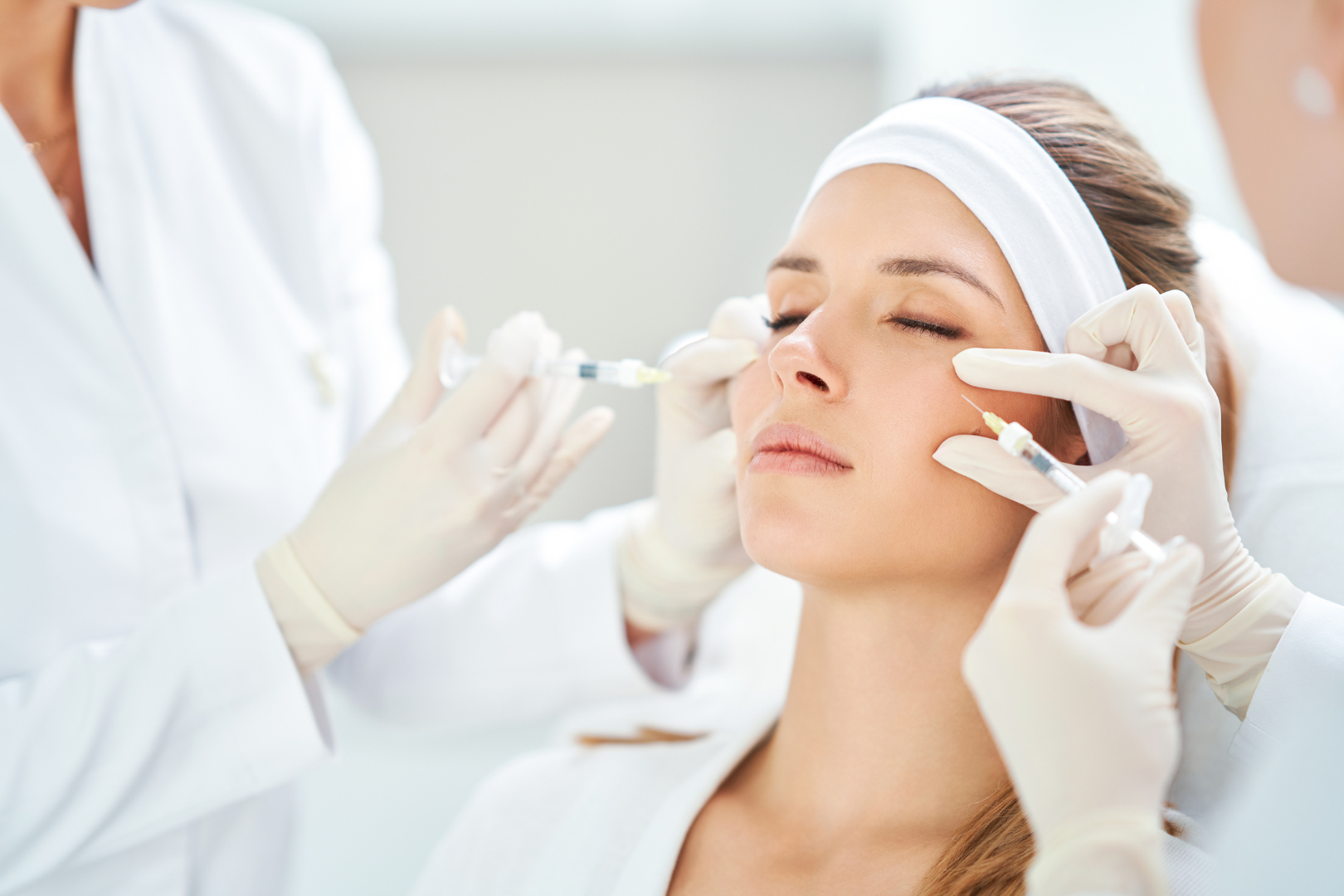
At Allure Aesthetics in King of Prussia, near Philadelphia, we offer a range of advanced neuromodulation treatments, including Botox, Dysport, and Xeomin. We also provide Jeuveau and Daxxify in certain cases. Dysport remains our top recommendation, supported by both reliable research and our experience treating thousands of clients. It offers faster results, longer-lasting effects, and a natural, refreshed look at a reasonable cost.
Whether you’re looking to smooth fine lines, enhance your confidence, or achieve a more youthful appearance, our personalized, non-surgical treatments are designed to help you look and feel your best.
For more information about our services or to schedule an appointment, please email us at info@allureaestheticsllc.com or book directly through our booking portal.
References
AbbVie. (2023, November). Botox. Prescribing information. http://www.allergan.com/assets/pdf/botox_cosmetic_pi.pdf
Azizzadeh, B., & Nduka, C. (Eds.). (2021). Management of post-facial paralysis with synkinesis. Elsevier.
Galderma. (2023). Dysport. Prescribing information. Dysport. https://www.dysportusa.com/PI
Kroumpouzos, G., Kassir, M., Gupta, M., Patil, A., & Goldust, M. (2021). Complications of botulinum toxin A: An update review. Journal of Cosmetic Dermatology, 20(6), 1585–1590. https://doi.org/10.1111/jocd.14160
Lee, K. C., Pascal, A. B., Halepas, S., & Koch, A. (2020). What are the most commonly reported complications with cosmetic botulinum toxin type A treatments? Journal of Oral and Maxillofacial Surgery, 78(7), e1–-e9. https://doi.org/10.1016/j.joms.2020.02.016
Nawrocki, S., & Cha, J. (2020). Botulinum toxin: Pharmacology and injectable administration for the treatment of primary hyperhidrosis. Journal of the American Academy of Dermatology, 82(4), 969–979. https://doi.org/10.1016/j.jaad.2019.11.042
Ong, A. A., & Sherris, D. A. (2019). Neurotoxins. Facial Plastic Surgery, 35(03), 230–238. https://doi.org/10.1055/s-0039-1688844
Salari, M., Sharma, S., & Jog, M. S. (2018). Botulinum toxin induced atrophy: An uncharted territory. Toxins, 10(8). https://doi.org/10.3390/toxins10080313
Witmanowski, H., & Błochowiak, K. (2019). The whole truth about botulinum toxin – A review. Advances in Dermatology and Allergology/Postępy Dermatologii i Alergologii, 37(6), 853–861. https://doi.org/10.5114/ada.2019.82795




